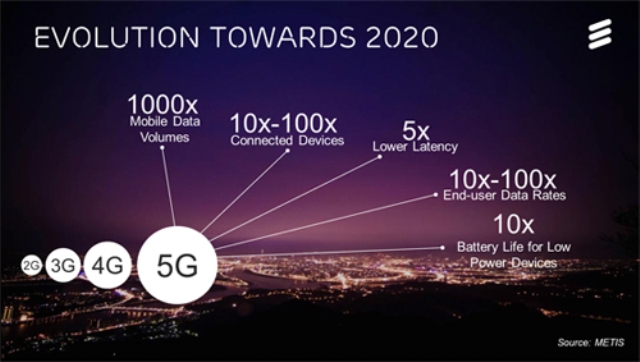
Telecom network maker Ericsson today announced the availability of 5G Plug-Ins for operator trials in 2016.
Ericsson’s 5G Plug-Ins are software-driven innovations that bring essential 5G technology concepts to today’s cellular networks.
Ericsson’s 5G Plug-Ins will be available for commercial networks starting in 2017. IoT will be one of the key drivers for the growth of 5G mobile technology.
New Ericsson 5G Plug-Ins address 5G use cases from mobile HD video, driverless buses and haptic feedback-enabled drones to fiber-equivalent residential wireless access.
Software-driven Plug-Ins bring flexible 5G evolution to existing networks while improving operators’ mobile broadband, fixed wireless and IoT services.
Arun Bansal, head of Business Unit Radio, Ericsson, said: “5G will be driven by new use cases requiring higher performance – from connected cars with perfect driving records, to immersive augmented reality for remote surgery, to multi-K movies on mobile devices.”
According to market reports, 5G subscription uptake will commence in 2020 and is expected to be faster than for 4G. New applications and use cases anticipated for 5G include safe, self-driving cars, remote controlled robots, haptic feedback-enabled drones and fixed wireless access – rivalling fiber capacity – for residential homes.
Ericsson is working with more than 20 mobile operators worldwide on 5G networking and use cases, including 5G field trials in 2016.
LTE will continue to evolve, addressing both an increased number of subscribers and their growing demands for extreme app coverage for data and video, as well as new low power wide area (LPWA) applications for the Internet of Things (IoT). In 2019, LTE will be the dominant mobile access technology and will reach 4.3 billion subscriptions in 2021.
5G will be on higher frequencies that have a shorter transmission range than current cellular networks and are prone to attenuation from foliage and weather-related factors, which can impact performance and reliability.
Peter Jarich, vice president, Consumer and Infrastructure Services, Current Analysis, said: “5G has gained momentum over the last year. Yet, without spectrum allocations or ratified standards, operators need a migration tactic allowing them to leverage current network investments in synch with their 5G evolution strategies.”
Forty percent of the world’s mobile traffic is carried over Ericsson networks. 5G Plug-Ins enable mobile operators to begin to trial and implement 5G technology as early as this year, and evolve to 5G at their own pace.





